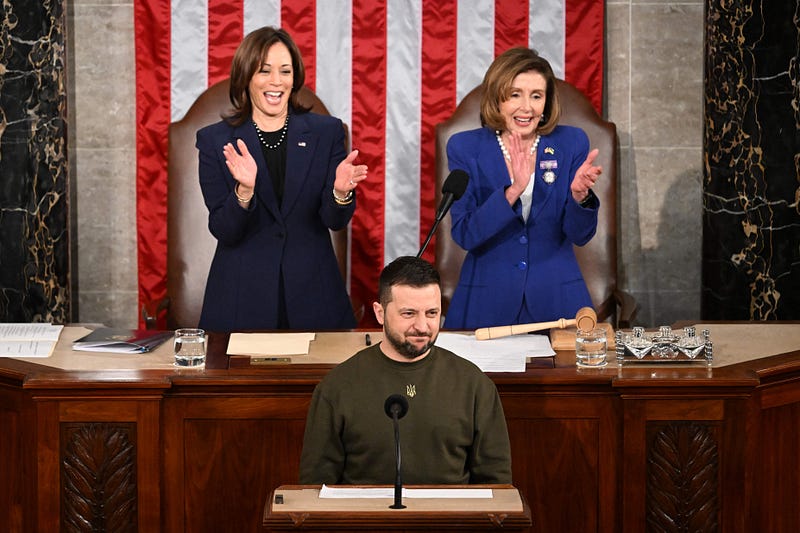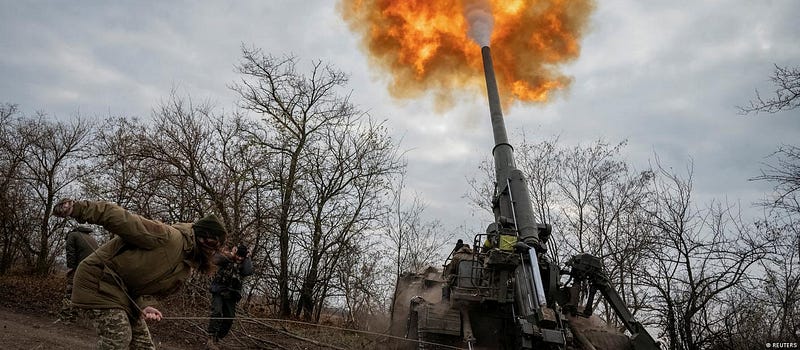
For anyone keeping an eye on Congressional spending, the past year has been an astonishing break from tradition on the front of foreign aid. Following Russia’s invasion of its territory just under a year ago, Congress has approved nearly $50 billion in various forms of aid for the beleaguered Eastern European nation of Ukraine. Throughout 2022, the Council of Foreign Relations has observed the United States government allocate consequetial sums of money for financial and military assistance to the Ukranians, as well as a significant humanitarian outlay in the form of food and medical care.
While the U.S. is not historically averse to spending its dollars on foreign exploits, its investment in other countries — outside of direct operations carried out by its armed forces — usually finds itself limited to a few billions of dollars, even in the most extreme cases. The invasion of Ukraine has thus prompted a tremendous shattering of precedent, leading to the largest flow of taxpayer money abroad this side of the Marshall Plan, enacted amid the aftermath of World War II from 1948–52 in order to rebuild the nations of the war-torn European continent — or, at least, the nations the Soviet Union did not withdraw from receiving funding. Historical orthodoxy usually regards the Marshall Plan as a resounding success, helping lead to the relatively unprecedented economic stability of the 1950s. However, the shaky world of the 2020s, still reeling from the COVID-19 pandemic and the lingering economic debilitation that has followed, represents a far riskier environment for massive investments a continent away, especially to a nation battling a significantly larger and traditionally more formidable power. In our current economic condition, is a governmental outlay of $50 billion, with more likely to follow, a justifiable amount to spend on aid to a country nearly 5,000 miles away whose very existence continues to hang in the balance?
In short, yes. In order to answer this question fully, however, one must examine recent events within the broader framework of contemporary European history.
* * *
Mired in the common political instability of the late 1960s, the Cold War’s European participants had détente on their minds. The United States, following the Richard Nixon administration’s strategic shift in foreign policy, and Canada were similarly intent on easing diplomatic tensions and codifying measures to improve security measures on the European continent. Urho Kekkonen, prime minister of Finland, eventually managed to pull enough strings to organize a security conference at the Soviet Union’s behest. The resulting Conference on Security and Cooperation in Europe would span two years, before coming to an agreement in the summer of 1975 in the shape of the Helsinki Accords, reflecting a mutual desire to lower the temperature of Cold War dialogue.

While legally non-binding, the Helsinki Accords reflected common commitments among European nations toward security, communication and cooperation on a variety of issues. Most famous among these were the ten focusing on direct relations between sovereign states, known as the Decalogue. Among other notions, these principles explicitly promoted self-determination and sovereign equality, and they condemned the use of force against member nations, as well as violations of frontiers or territorial integrity. Europe has since operated under the premise of the Helsinki Accords as if they were law — admittedly with a limited degree of leeway for nations dealing with separatist movements — and aside from Soviet scramblings to deter the revolts of Warsaw Pact nations, they have remained unviolated in any noteworthy capacity.
At least they had until Feb. 24 of last year, when the Russian Armed Forces launched a four-pronged attack into Ukrainian territory on the orders of Russian president Vladimir V. Putin, where they met tremendous unexpected resistance. While conventional wisdom and available information pre-invasion favored Russia’s forces considerably, the invasion has proved largely disastrous for a military that expected to waltz into Ukraine’s sovereign territory with little difficulty. Far from being cowed by the swiftness and brutality of the invaders, Ukrainian president Volodymyr Zelenskyy has risen to this most testing of trials with relentless invigoration and inspiring resolve. An early assault on Kyiv failed miserably, and the VDV, Russia’s elite airborne forces, have been all but wiped out. The forces of Ukrainian general Oleksandr Syrskyi (among others) have so damaged opposition troop numbers and equipment that Putin has been forced to mobilize hundreds of thousands of Russians to prevent large territorial losses and capitulation of his forces in the face of Ukrainian counterattacks. Although only a fool would rule out victory for the invaders at this stage, the mere existence of protracted engagements in southern and eastern Ukraine, let alone the possibility of defeat, represents a catastrophic logistical failure on the part of the Russians.
While the astonishingly detailed coverage of the invasion of Ukraine can prove captivating, of similarly significant importance are the diplomatic overtures between the Zelenskyy government and the North Atlantic Treaty Organization (NATO), as well as states that have expressed a post-invasion interest in joining NATO. While strictly uninvolved with the ongoing conflict — no matter what claims to the contrary conspiracists may peddle — NATO has placed various forms of monetary assistance, intelligence capabilities and military equipment at Ukraine’s disposal. Nearly every major power in NATO has recently pledged some number of tanks for use by the Ukrainian military, and French president Emmanuel Macron has refused to rule out offering F-16 fighter jets to the beleaguered resistance forces as well.

* * *
Why should this scenario, however, convince the U.S. government to continue offering Ukraine sums of money that, even a few years ago, would have seemed utterly ridiculous?
The Helsinki Accords led to a period of unprecedented international peace in Europe, particularly after the dissolution of the Eastern Bloc, that stimulated European integration and overall prosperity. A continent once renowned for the near-constant feuding of its ever-shifting states had not seen widespread violence this side of Yugoslavian dissolution until last year, a remarkable testament to the power of international cooperation. These norms, and the peace undergirding them, have promptly been violated by Putin’s Russia. In a post-Helsinki world, anything might go until the nations of Europe and their allies reestablish the proverbial law of the land, even by non-binding means.
U.S. president Joe Biden has done, by most accounts, a phenomenal job in handling the invasion of Ukraine. His insistence on unilateral NATO cooperation has rejuvenated the previously uneasy relationship between the United States and its European allies, and has convinced NATO’s signatories to put more focus on their own defense. He has freed up assistance to a nation under siege in violation of the Helsinki Accords without sending a single U.S. soldier to die, offering Zelenskyy practical aid without succumbing to his every whim. Now he is presented with a key inflection point in Euro-American affairs. The war in Ukraine represents not only a challenge to its democratic institutions, but to the post-war consensus that irredentist actions and war for territorial gain are morally unjustifiable. Europe has not looked so actively precarious since the war that prompted the Marshall Plan, and it may require the brokering of a new Helsinki Accords in order to prevent Russia’s invasion from gaining legitimacy or popularity, or even becoming a blueprint for nefarious actors to come. The United States must show that it is willing to stand for the future of Europe: not paternalistically, but rather as a willing partner to further peace, stability and cooperation on a multitude of fronts.
Squander this opportunity, and it could irreparably damage further cooperation, stability and peace in Europe. Seize it, and both Europe and the United States will reap the rewards of such proactive policy for generations to come. Until war’s end, the time will come again and again for action, and there is no better way for the U.S. to provide assistance to Ukraine than via the almighty dollar.
















